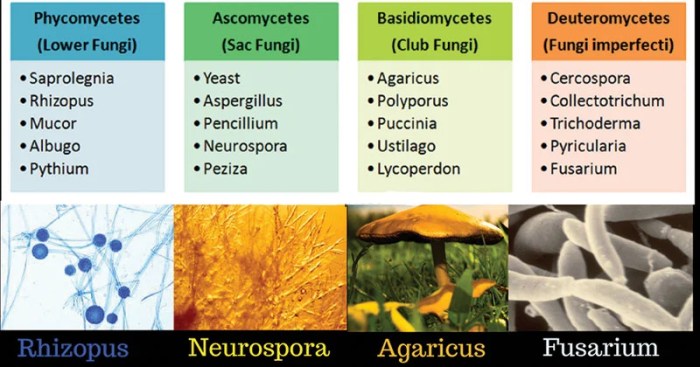Match the fungal structure with its description – Matching fungal structures with their descriptions unlocks a wealth of knowledge about these enigmatic organisms. This comprehensive guide provides an in-depth exploration of fungal structures, their functions, and advanced techniques for accurate matching, offering valuable insights into fungal taxonomy, ecology, and biotechnology.
Delving into the intricacies of fungal morphology, we will uncover the unique characteristics of each structure, from the delicate hyphae to the specialized reproductive spores. The table presented within this guide serves as an invaluable resource, enabling readers to effortlessly match fungal structures to their corresponding descriptions, fostering a deeper understanding of their roles in the fungal life cycle.
1. Fungal Structures
Fungal structures exhibit a remarkable diversity, reflecting the varied ecological roles and evolutionary adaptations of fungi. The primary structures include:
Hyphae
Thread-like filaments that form the vegetative body of fungi, facilitating nutrient absorption and growth.
Mycelium
A network of hyphae that colonizes substrates and forms the basis of fungal colonies.
Fruiting bodies
Specialized structures that produce and disperse spores, ensuring the survival and propagation of the fungus.
Spores
Microscopic reproductive units that are dispersed by wind, water, or animals.
Sclerotia
Compact masses of hardened hyphae that serve as survival structures during unfavorable conditions.
Rhizomorphs
Cord-like structures composed of aggregated hyphae, enabling fungi to explore and exploit new substrates.
2. Matching Structures to Descriptions
| Structure | Description | Image | Notes |
|---|---|---|---|
| Hyphae | Thread-like filaments forming the vegetative body of fungi | [Optional image] | Can be septate (with cross-walls) or aseptate (without cross-walls) |
| Mycelium | Network of hyphae colonizing substrates | [Optional image] | Can be extensive, covering large areas |
| Fruiting bodies | Specialized structures producing and dispersing spores | [Optional image] | Vary in shape and size, e.g., mushrooms, conks, puffballs |
| Spores | Microscopic reproductive units dispersed by various means | [Optional image] | Can be asexual (conidia) or sexual (ascospores, basidiospores) |
| Sclerotia | Compact masses of hardened hyphae | [Optional image] | Provide protection and survival during unfavorable conditions |
| Rhizomorphs | Cord-like structures composed of aggregated hyphae | [Optional image] | Facilitate exploration and exploitation of new substrates |
3. Advanced Matching Techniques

Advanced techniques for matching fungal structures to descriptions involve leveraging machine learning and natural language processing (NLP). Machine learning algorithms can be trained on large datasets of fungal structures and descriptions, enabling them to identify patterns and make accurate matches.
NLP techniques can extract and analyze semantic information from descriptions, improving the accuracy of matching.These techniques enhance the efficiency and accuracy of the matching process, particularly for large datasets or complex descriptions.
4. Applications of Structure-Description Matching

Matching fungal structures to descriptions has practical applications in various fields:
Taxonomy
Identification and classification of fungal species based on their morphological characteristics.
Ecology
Understanding the diversity and distribution of fungi in different ecosystems.
Biotechnology
Screening and selection of fungi with specific traits for industrial applications.For instance, in taxonomy, structure-description matching aids in identifying and classifying unknown fungal species by comparing their structures to known species in databases. In ecology, it enables the assessment of fungal diversity and distribution in various habitats, contributing to our understanding of ecosystem functioning.
5. Limitations and Challenges

Matching fungal structures to descriptions faces limitations and challenges:
Morphological plasticity
Fungi can exhibit variations in structure under different environmental conditions, making matching difficult.
Subjectivity in descriptions
Descriptions of fungal structures can be subjective and vary among observers.
Incomplete or inaccurate descriptions
Descriptions may lack crucial details or contain errors, affecting the accuracy of matching.To overcome these limitations, standardization of description methods, development of comprehensive databases, and use of advanced matching techniques can improve the accuracy and reliability of the process.
Detailed FAQs: Match The Fungal Structure With Its Description
What are the primary fungal structures?
The primary fungal structures include hyphae, mycelium, spores, conidia, and fruiting bodies.
How can advanced techniques enhance structure-description matching?
Advanced techniques such as machine learning and natural language processing can automate the matching process, improving accuracy and efficiency.
What are the practical applications of structure-description matching in fungal research?
Structure-description matching aids in species identification, ecological studies, and the development of antifungal therapies.